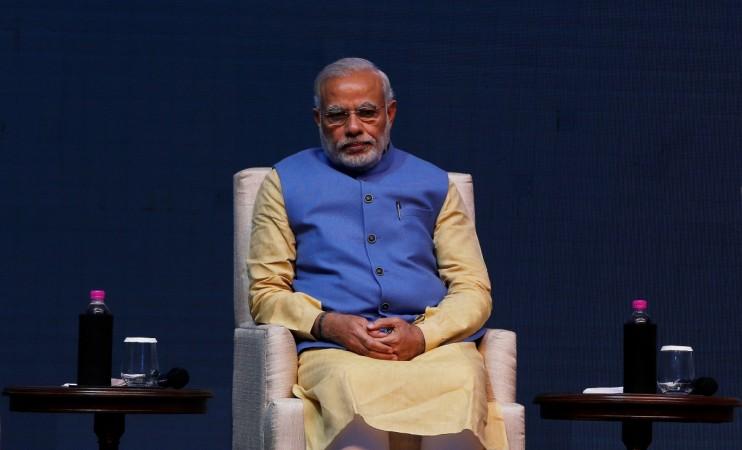
Prime Minister Narendra Modi seems to have suffered a blow to his reputation on the growth front in just six quarters. After catapulting India's GDP growth rate to 7.4 percent for the September 2015 quarter that enabled the country to earn the tag of the world's fastest-growing economy, his demonetisation decision could not only strip India of it but also bring it closer to a weakening China.
Projections for the financial year 2016-17 after factoring in the slowdown induced by the note ban place the GDP growth rate to ~6.5 percent for the second half (October 2016 to March 2017, or H2). The latest such estimate by a State Bank of India economist has pegged the December quarter (Q3, FY2017) rate at "decisively lower than 6 percent."
"Even though an objective assessment of the demonetisation exercise on output growth is a difficult one given the mutual interactions, we expect GDP growth to be decisively lower than 6% in Q3FY17. In Q4FY17, it could only make a gradual comeback. Overall, our estimates for H2FY17 and FY17 GDP growth are at 6.3% and 6.7% respectively with a downward bias. The service sector growth rate is indeed having a significant downward bias," Soumya Kanti Ghosh, group chief economic adviser, State Bank of India (SBI), said in the latest issue of the lender's SBI Ecowrap.
At ~6.7 percent, India may end up just a notch above China's 6.5 percent estimated for calendar year (CY) 2016.
It's a no-brainer that the currency crunch has hit economic activity hard in a country where cash is king.
"Our assessment of a 6.7% GDP growth with a downward bias is based on the premise that the liquidity shock has led to a drastic consumer spending shock. This typically means, even as RBI has replaced around 44% of the demonetised currency, the money is not coming back decisively into the system as people are averse to spending. This in turn is leading to a vicious cycle of banks being unable to replenish cash thereby precipitating the shock," Ghosh said.
"We also believe sectors like construction, real estate, cement & FMCG are likely to witness a double-digit decline in sales in Q3," he added.
On Friday, the government's official estimates that did not factor in the impact of demonetisation said that the country would post a growth rate of 7.1 percent in the current financial year (April 2016 to March 2017), in line with the Reserve Bank of India's (RBI) projections and much lower than the 7-7.75 percent estimated in the Economic Survey presented last year, before Budget 2016.
India's GDP growth rate for the financial year 2015-16 was 7.6 percent.
"Real GDP or Gross Domestic Product (GDP) at constant (2011-12) prices in the year 2016-17 is likely to attain a level of '121.55 lakh crore, as against the Provisional Estimate of GDP for the year 2015-16 of '113.50 lakh crore, released on 31st May 2016. The growth in GDP during 2016-17 is estimated at 7.1 per cent as compared to the growth rate of 7.6 per cent in 2015-16," the official estimates said. The figures were released after stock markets ended trading for the week and therefore their impact on share prices will be seen when markets open next week.
The Indian economy grew at 7.3 percent in the September quarter and 7.1 percent in the June quarter this financial year.








